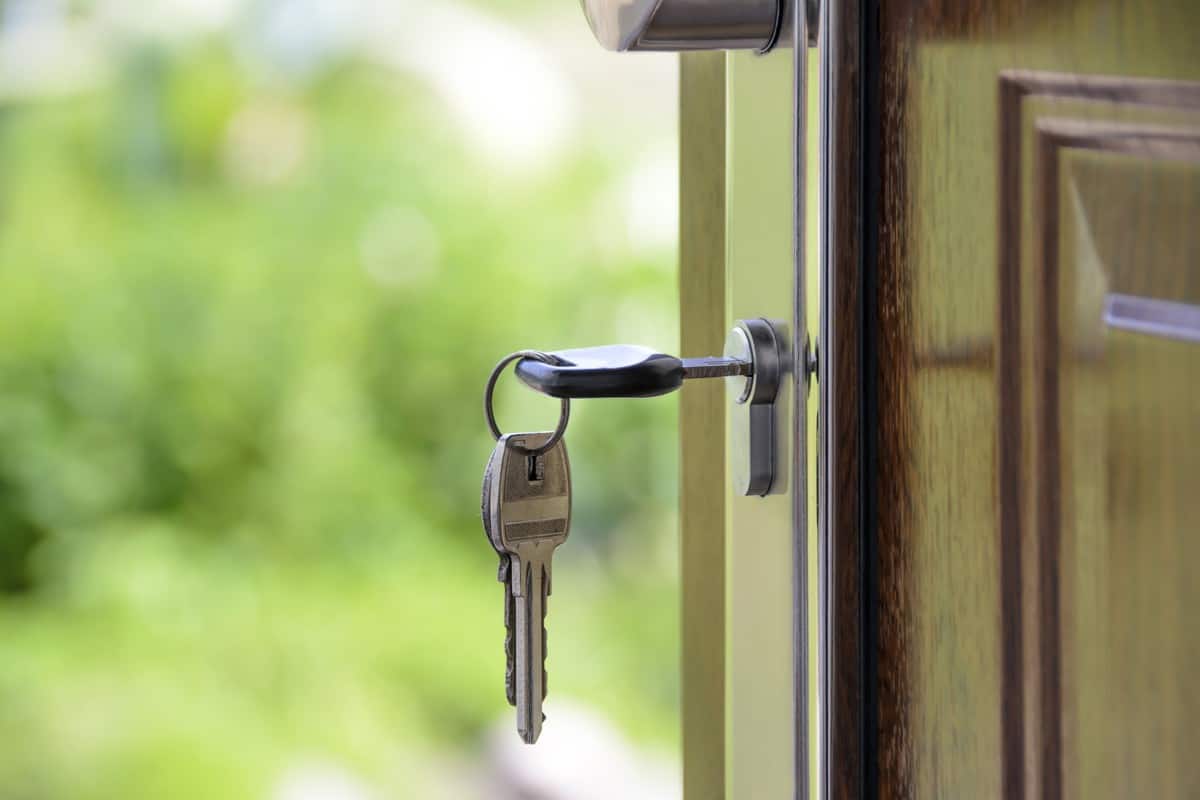So you’re thinking about buying a house. Congratulations — that’s an exciting step in many people’s lives. According to a 2020 MyWalletJoy report, 59% of Americans consider homeownership to be part of the American Dream.
But as you’re weighing important decisions, such as Craftsman versus midcentury modern, don’t forget about one crucial step along the way to becoming a homeowner: saving for a down payment. Here’s how to do it.
How much should you save for a down payment?
A down payment is a percentage of the total sales price of your home, which you need to pay upfront when securing a loan. The general rule of thumb is that you should aim to put down 20%. So, for example, if you want to finance a $200,000 home purchase, you’ll need $40,000 in cash for a down payment.
“If you make a down payment of less than 20%, you will typically be required to obtain private mortgage insurance, also called PMI, which protects the lender if you default on your mortgage,” says Leslie H. Tayne, author of Life & Debt: A Fresh Approach to Achieving Financial Wellness and a financial attorney who specializes in debt management, and founder and director of Tayne Law Group, P.C., headquartered in New York.
However, you don’t necessarily have to save up a full 20% down payment. Some loans, such as Federal Housing Administration (FHA) loans, require as little as 3.5% down, depending on your credit and other factors. That can be beneficial to young homeowners who don’t have high incomes or buyers in expensive real estate markets.
There will also be additional expenses when it comes time to close the loan, which you may choose to pay out of pocket. You might also be able to roll closing costs into the principal loan, but that will result in more interest paid over time.
Still, if you can swing it, a 20% down payment will help you borrow less and avoid PMI, “which could save you thousands over the term of your mortgage,” Tayne says.
7 steps for saving up a down payment
The idea of saving up thousands of dollars for a home might seem daunting, but if you break it down into steps, the goal will feel much more achievable. Here’s how to go about saving a down payment.
1. Calculate how much you need
The first step is determining how much your down payment should be. That’s going to depend on a few factors, such as your income and the cost of homes where you live.
For example, according to MyWalletJoy’s 2020 homeownership report, the average person spent close to $47,000 on a down payment for their most recent home purchase, with West Coasters putting down 53% more than those who bought homes in the Midwest (likely due to real estate costs).
“A good first step is to use a down payment calculator,” says Julie Ramhold, a consumer analyst and money-saving expert with savings website DealNews.com.
A calculator can do the math for you, as long as you can provide a few details about your finances. Whether you use a calculator or run the numbers yourself, you’ll need to know a few key pieces of information — namely, the selling price of the home and estimated closing costs.
2. Identify when you want to buy
Once you know how much you need to save, the next step is to lock down your timeline. Is homeownership still a far-off goal, or do you plan to buy within the next two years?
“Having a start and end date for reaching your down payment goal can help ensure that you save enough money within the desired timeframe,” Tayne says.
3. Set your monthly target
Once you calculate your down payment amount and set your timeline, it’s time to crunch the numbers and find out how much you should expect to save on a monthly basis. For example, say your budget is $250,000 — about what you could expect to pay in cities such as Baltimore, Charleston, or Spokane.
“If you’re looking at houses in the $250,000 price range, a 20% down payment would be $50,000,” Tayne explains. “If you had a timeframe of four years in mind, you’d need to save about $1,050 a month.”
4. Decide on the best place to keep your cash
You’ll also need to decide where to store your savings until it’s time to use them. You don’t want the money sitting under a mattress and not earning any interest, but you also don’t want to risk your hard-earned, short-term savings in the stock market.
According to Tayne, a few good options include a high-yield savings account, money market account, or a certificate of deposit (CD). These savings options will allow your money to grow with modest interest, but the principal balance will also be protected.
5. Create a budget
Once you know your monthly savings amount, you can start setting that amount aside every week or month (or whatever regular interval you want to use) right away. If you don’t have enough cash flow to start saving yet, “you need to consider cutting back on unnecessary expenses, so that money can be rerouted to your down payment savings,” Ramhold says.
When saving for a down payment, it’s a good idea to evaluate your budget in general, according to Ramhold. “Audit your expenses and see where most of your spending is going, then adjust,” she says.
She adds that you don’t have to deprive yourself of the things you enjoy; a $5 latte from Starbucks probably isn’t going to make that big of a difference in the grand scheme of things. But try not to make frivolous spending a habit. Also, consider paying off any existing debt you have, such as a car loan or credit card balance.
“Not only will this save you money in the long run, it’ll also make the process of applying for a mortgage less stressful,” Ramhold says.
6. Automate your savings
When you’re able to create room in your budget for down payment savings, it can be helpful to automate the process. For example, you can ask your bank to automatically withdraw a set amount from your checking account and deposit it to your savings account every two weeks.
“Set up automatic recurring transfers for each payday, so there’s no need to remember to make the transfer yourself,” Tayne says. Not only will you never forget to set aside savings, but you’ll be less tempted to spend the money since you don’t have to transfer the funds yourself every time.
7. Track your progress
Finally, it’s important to make sure you’re staying on schedule. If you’re the DIY type, you can use a simple spreadsheet to track your cash flow and savings progress.
If you’d rather automate this part of the process, too, consider using a free tool such as Mint or even a paid budgeting service such as YNAB to ensure you’re sticking to your budget and saving according to your goal.
8 ways to save for your down payment
Now that you know how to save up for a home down payment, it’s time for the most challenging part: saving up the cash. So how do you come up with the sizable chunk of change needed? Below are a few ideas.
1. Get a side hustle
One of the best ways to save up a large amount of money is by increasing your income, according to Ramhold. Consider taking on a side job by freelancing or through a service such as Lyft or Postmates. Getting a second job might be a tall order depending on your current lifestyle and what your day job requires, she notes, but you can just do it temporarily.
2. Save raises and bonuses
Working more isn’t the only way to increase your income. “Alternatively, you could ask for a raise — especially if it’s been a while since you’ve received one,” Ramhold says. This will allow you to earn more without adding hours and may help you qualify for a bigger, better mortgage.
3. Take out a 401(k) loan
Ramhold says you can consider borrowing the money from yourself through a 401(k) loan. The IRS allows you to borrow up to 50 percent of your vested balance or $50,000, whichever is less.
Usually, there is an origination fee of around $75, plus interest. Fortunately, you pay that interest to yourself, and the money goes into your account balance. If done correctly, this method is, by far, the cheapest way to borrow money.
Just keep in mind that any money you take out will stop accruing compounding returns until you’ve paid it back. And failing to repay the loan according to the rules could result in a 10% early withdrawal penalty. Your employer must also allow 401(k) loans.
4. Refinance debt
You may not be in the position to pay off your existing debt any faster, but you can make it less expensive by refinancing to a lower interest rate. For example, you could refinance your older, high-interest student loans to a lower rate, or take out a personal loan to consolidate high-interest credit card debt.
Put the money you save on interest toward your savings instead, or use it to pay down your principal balance even faster.
5. Ask your family for some help
If your parents are interested in helping you out financially, they can gift some or all of the funds needed for a down payment. You’re also allowed to use money given to you by stepparents and grandparents.
How much of your down payment that can come from gifts will depend on the type of loan and how much you put down in total. For example, if you borrow an FHA loan and your credit score is between 580 and 619, at least 3.5% of the down payment has to come from your own money.
Also, keep in mind that the money must truly be a gift. It’s actually illegal to use money that was “gifted” with the expectation that it’ll be repaid.
6. Get a roommate
Rent is probably one of your top living expenses. By renting out a room in your home, you can significantly cut the cost of rent and utilities, and put that money toward a down payment fund instead.
If you don’t love the idea of reliving your college dorm days with a roommate, you could also try renting out your home while you’re out of town through a service like Airbnb or VRBO. Just check with your local city laws and your lease to make sure subletting is allowed.
7. Check out first-time homebuyer programs
There are many local and national programs designed to help first-time homebuyers afford to buy. For example, the National Homebuyers Fund offers up to 5% of the total loan cost back to first-time buyers in the form of a grant, while the Good Neighbor Next Door program offers down payment assistance to buyers in certain career fields.
Los Angeles is an example of a city that also offers down payment assistance to lower-income buyers. Do some research to find out what programs exist in your city or state.
8. Try crowdfunding
Another popular way to come up with cash fast these days is by setting up a crowdfunding campaign through a site like Kickstarter or GoFundMe. If you have a lot of generous connections, it may not hurt to try.
Just temper your expectations, because GoFundMe campaigns tend to be successful when they involve people who are seriously in need.
“So if you’re just looking to speed up the process of buying a house, you might not have much luck,” Ramhold says.
The bottom line on saving for a down payment
It’s important to note that lenders require a detailed paper trail for any money you use as your down payment. Regardless of how you choose to save up the funds needed, be prepared to show where they came from.
With a solid plan and maybe some outside help, saving up a down payment is an achievable goal. If you can make a few sacrifices now, becoming a homeowner should pay off in the long run.



